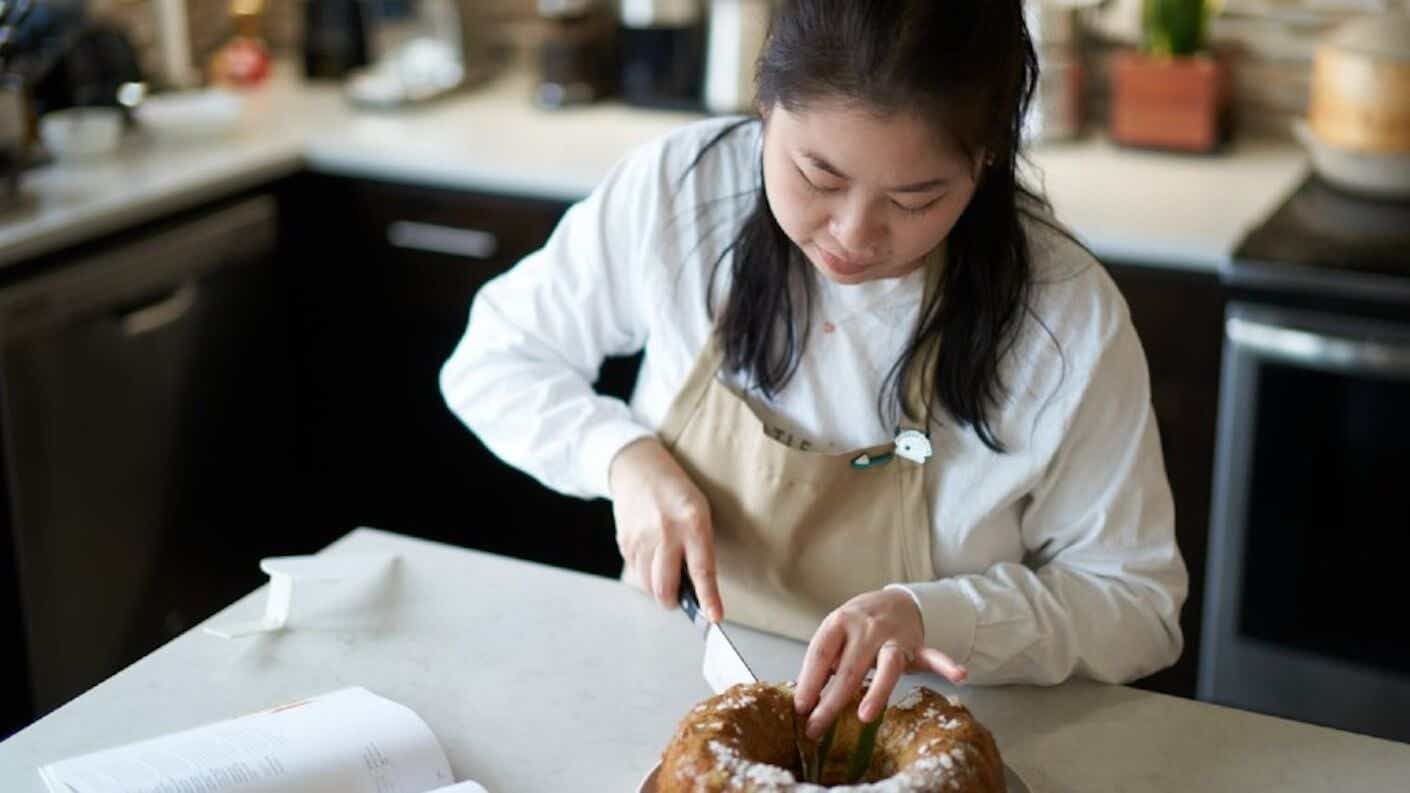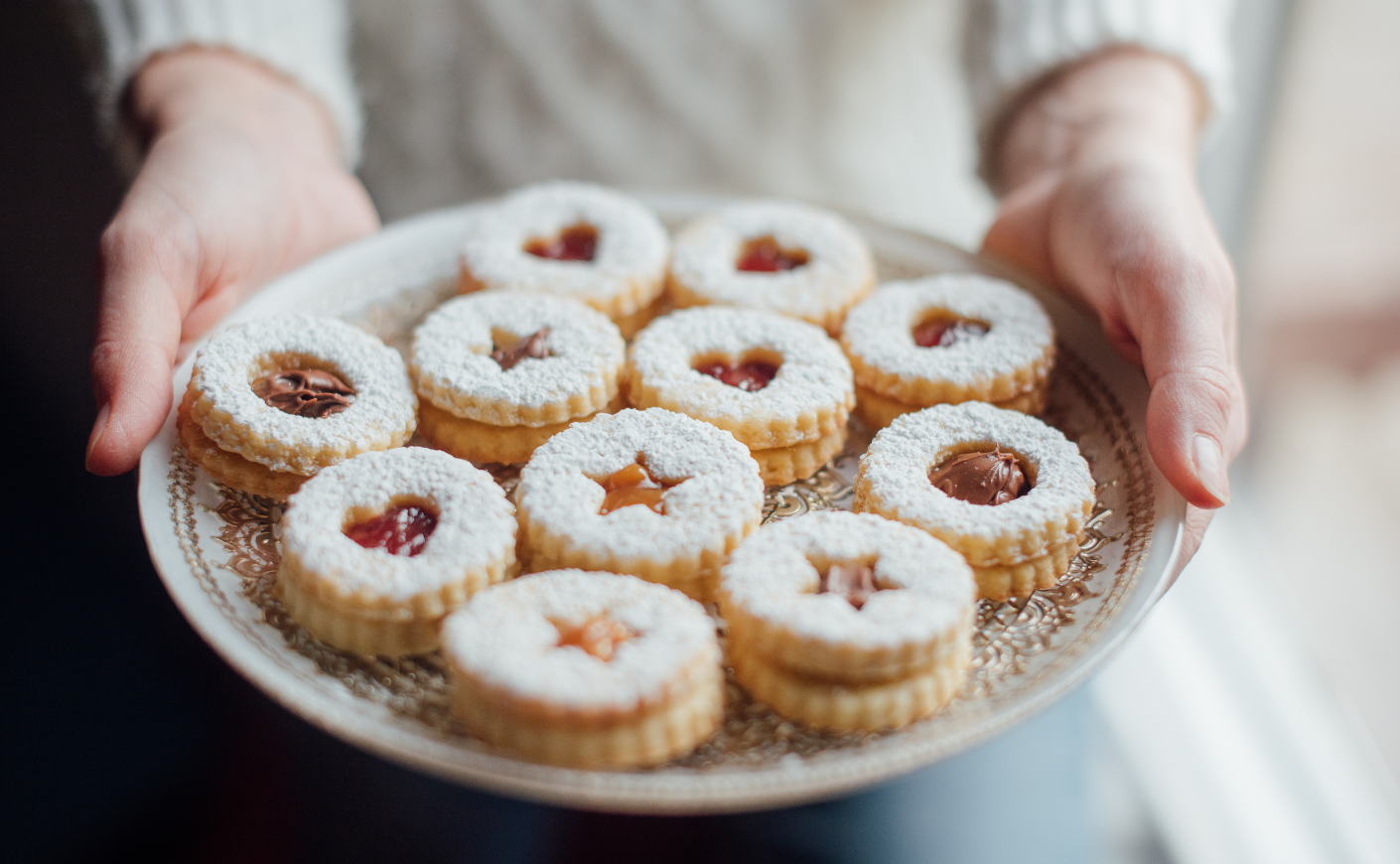The holiday season is on the horizon, which means it’s time to fire up your oven for another cookie-baking marathon. But let’s be honest: After years of the same gingerbread and powdered-sugar treats, even our favorite classics can start to feel a little…stale. Luckily, there’s plenty of ways to give these traditional sweets a fresh twist.
In the spirit of experimentation, we spoke to culinary creator, Kat Lieu, whose cookbook, 108 Asian Cookies: Not-Too-Sweet Treats from a Third-Culture Kitchen, adds Asian pantry staples like gochujang, ube, miso, fish sauce, matcha, and MSG to old-school Western cookies. (And if you’ve ever heard on social media or elsewhere that there’s a big health cost to using MSG to intensify the flavor of food, there’s no need to worry — here’s more on the safety of this ingredient.)
If you’re seeking baking inspiration that looks beyond those chocolate chips tucked away in your cabinet, Lieu’s tips will expand your repertoire. And if shopping at your local Asian market has ever felt a bit daunting, Lieu has some guidance to help you step outside your comfort zone with confidence.

Katie Couric Media: For home bakers who feel stuck in a cookie rut, what are some approachable Asian-inspired recipes to try?
Kat Lieu: The entire first chapter of my book is a great introduction, because a lot of the recipes are very familiar. The butterfly cookie is a very buttery shortbread cookie that’s simple — but I give a bit of the story behind it, and encourage people to use an Asian ingredient like miso instead of salt, to balance the flavors and temper the sweetness.
If you’re a fan of Linzer cookies, I love the Ube Linzer Cookies. You can’t find fresh ube in the form of a tuber in America, because it’s actually considered invasive. But that just encourages someone to head into an Asian supermarket and buy ube jam.
The most common thing I hear from people who aren’t familiar with Asian supermarkets is that they’re overwhelming. But [Asian markets have] become very friendly. You see English on labels, and the workers all speak English, too. Just find an Asian grandma and say, “What’s your favorite fun noodle that I could try? Or your favorite soy sauce?” And then you put it into my Fudgy Soy Sauce Chocolate Chip Cookies, or my Bourbon and Fish Sauce Cookies. These cookies are familiar, but with an incredible, bold new spin.
What inspired you to reimagine traditional Asian flavors in cookie form, and how did you decide which ingredients to spotlight?
I looked at cookbooks and realized that there hasn’t been a cookie-focused one that’s fully Asian-themed. So I figured if I’m the “queen of Asian baking,” as some call me, this was a natural path.
But I don’t have a baking background: I never worked in a bakery or made cookies with my mom or my grandma. So I thought, how can I reimagine a chocolate chip cookie that hasn’t changed much over the years? How do we substitute a new ingredient for vanilla extract, since that’s becoming increasingly pricey? We could use Japanese whiskey. I would call myself a “chaotic kitchen wizard.” I just love mixing flavors.
I love all the creativity that’s happening in the food world, and I love that we’re also changing the narrative. Because a lot of people say, “Oh, Asians don’t really bake.” The concept of baking and making bread and things like that is very Western, and it did come from colonization. France colonized Vietnam and brought over bread, but the Vietnamese were able to make it into banh mi. So something that came from a place of oppression became this powerful, iconic sandwich. My grandparents are from Vietnam, my mom’s from China, and my husband is Filipino and Taiwanese. So 108 Asian Cookies is a way of giving credit and respect to all of these amazing cultures.
What are your favorite pantry staples to keep on hand?
One of them would be MSG, unsurprisingly. It just makes everything taste better. With any cookies that have a bit of an umami element — my curry peanut butter cookies, my matcha cookies — you can add a pinch of MSG, and it’ll really push out that savoriness. Your cookie won’t taste like a steak, but it’ll have layered, complex flavors. And I think half of the cookies in my book include miso instead of salt.
I also use glutinous rice flour for all of my gluten-free cookies or my mochi cookies. Soy sauce is another ingredient that can add that savory balance to your cookies.
How do you balance cultural authenticity while also experimenting with some modern twists?
I don’t claim to be authentic with any of the recipes, but I do claim respectfulness. It’s very important to be respectful, to give attribution to the culture that inspired the recipe. It’s very important to not appropriate — I wouldn’t say I invented a mochi cookie. Mochi is from Japan. I try to be very respectful in that sense. I can’t claim authenticity because everything in [the book] is unique and has a new spin.
This is a first step to a new way of looking at food. Instead of gatekeeping or saying food must be authentic, this is a new way to respectfully merge cultures and create something new and beautiful. I’m taking stories from my ancestors, my background, and my heritages to turn into something beautiful — and it’s a cookie. It’s quite powerful.












